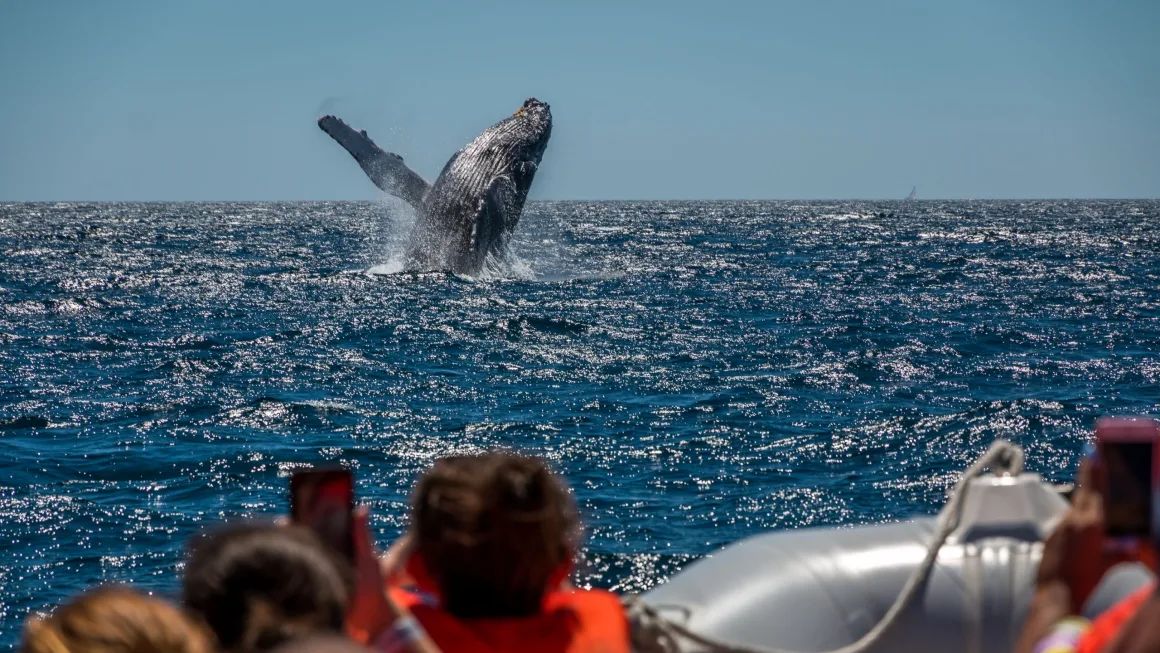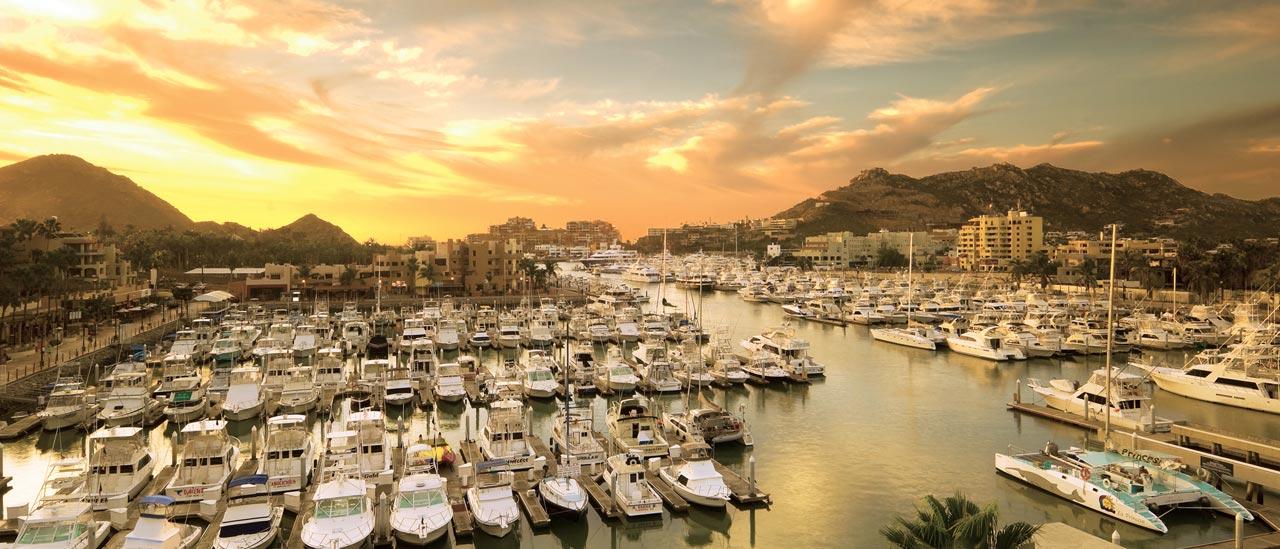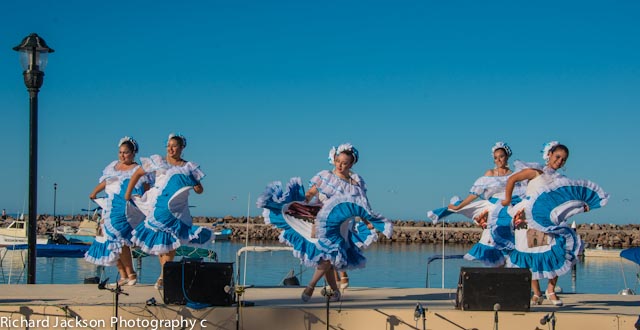If you’re seeking a rewarding experience for you and your family, few things compare to spending time at your second home in Mexico. During the winter months, Mexico becomes a beloved vacation destination, not only due to its pleasant climate and stunning beaches, but also because it offers the opportunity for captivating whale watching adventures.
During the winter season, Mexico’s coasts become a haven for thousands of humpback whales as they migrate to mate and give birth. Witnessing this extraordinary event is an experience that leaves an indelible mark, one that you’ll yearn to relive time and time again. The sight of these colossal and majestic creatures, with their lobtailing, fin slapping, and breaching, is nothing short of awe-inspiring. Despite their immense size – reaching up to 60 feet in length and weighing up to 40 tons – humpback whales are gentle giants, posing no harm. What truly mesmerizes is their innate navigational prowess. Covering a staggering distance of approximately 3,000 miles, they undertake their migration without any reliance on GPS. Starting from Alaska, they make their way to Mexico’s coastal cities or even venture as far as Hawaii.
Every year, in early December, humpback whales grace the waters of Baja California Sur, with some venturing further to Puerto Vallarta and the Riviera Nayarit. Their arrival in Baja California precedes their appearance in Banderas Bay, typically seen here earlier. Cabo witnesses these majestic creatures in early December, while it is more common to spot them emerging in Jalisco and Nayarit by mid-December. They grace the shores of Puerto Vallarta until late March before making their way back to Cabo, offering sightings until mid-April.
During the winter months, these popular beach destinations transform into breeding grounds for whales seeking mates. The most captivating aspect is the competition among male whales to impress females through acrobatic displays, showcasing their agility and strength. Spectators, whether on the water, on the shore, or even from their resort balconies, have the privilege of witnessing this extraordinary mating game.
Embarking on a whale watching tour is an activity that the entire family will cherish, while also providing an educational experience. It offers a profound connection with nature and a refreshing break from the monotony of daily life.
Puerto Vallarta
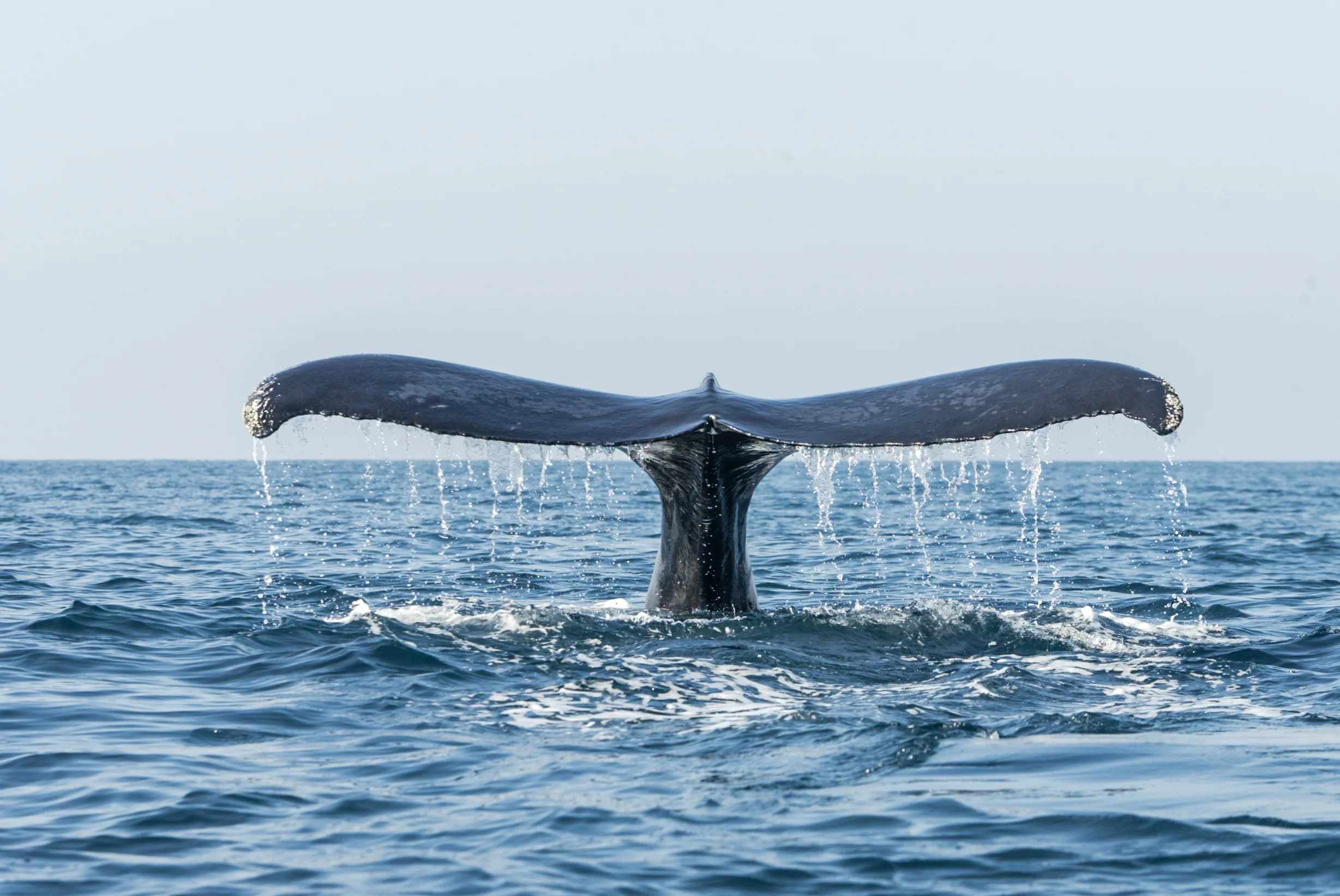
Puerto Vallarta is renowned for its wildlife ecotourism, with the added advantage of the Sierra Madre mountains embracing the Banderas Bay. The captivating blend of beach and jungle landscapes creates a magnificent playground for both tourists and wildlife.
Within Puerto Vallarta’s seas, majestic humpback whales gracefully emerge, shooting spouts of water, waving their tails, and breaching from the depths, creating a mesmerizing spectacle. Their sheer size and immense power leave a lasting impression. Even more remarkable is their ability to perform acrobatic movements despite weighing a staggering 40 tons.
During your whale watching tour, you may also have the opportunity to spot sea turtles, manta rays, and pods of dolphins. The boats can get remarkably close to the whales, ranging from 60 meters (200 feet) to 80 meters (262 feet), allowing you to capture breathtaking photos and have an incredible interaction with these majestic creatures. There are times when the whales appear just as curious about us as we are about them, almost as if they’re performing for the boat passengers, seeking our attention.
It’s important to note that if you happen to be vacationing in Puerto Vallarta between mid-December and the end of March, you don’t necessarily need to book a dedicated whale watching tour to catch a glimpse of these magnificent creatures. By joining any early morning boat tour, it’s highly likely that you’ll have the chance to witness whales, and the boat captain will be sure to point them out if they’re in the vicinity. However, participating in a dedicated whale watching tour has its advantages. Some tour operators have boats equipped with hydrophones, which allow you to listen to the enchanting melodies of whale songs. These songs are a complex symphony of sounds and rhythms that are truly awe-inspiring to experience.
Multiple tour operators offer whale watching tours with varying durations and prices. Before your trip, it is recommended to consult your Member Services or Pre-Arrival agent to determine the best option for you and your group. For those staying at Villa del Palmar Puerto Vallarta, the nearest marina for whale watching tours is the A.P.I. Marina. Please note that it is sometimes confused with Marina Vallarta. Although both marinas are located close to each other, most tours depart from the A.P.I. Marina. It is approximately a 7-minute drive (1.2 miles) from Villa del Palmar Puerto Vallarta.
Family vacations provide an incredible opportunity for creating lasting memories and strengthening bonds. Whale watching is an unforgettable experience that will leave a lasting impression in your heart.
Riviera Nayarit

Whale watching is a highly popular activity in Riviera Nayarit. Depending on the tour company you choose, you can either head closer to Punta Mita or visit the mesmerizing Islas Marietas (Marietas Islands). The duration of tours may vary, but typically they depart early in the morning and last for around 4 hours.
While humpback whales are the most commonly sighted species in Riviera Nayarit, there are occasional sightings of Orca whales as well. However, this can be distressing for the humpbacks, as Orca whales are known to prey on humpback whale calves.
Humpback whales are incredibly friendly and often approach boats to greet them with a blow or a fin flap. They are truly a magnificent sight to behold.
For guests staying at Villa del Palmar Flamingos, the nearest marina where the boats depart from is located in Nuevo Vallarta. You can find the Nuevo Vallarta Marina which is just an 18-minute drive (7 miles) from Villa del Palmar Flamingos. Prior to your arrival, feel free to reach out to your Member Services or Pre-Arrival agent who can assist you in reserving a whale watching tour.
Los Cabos
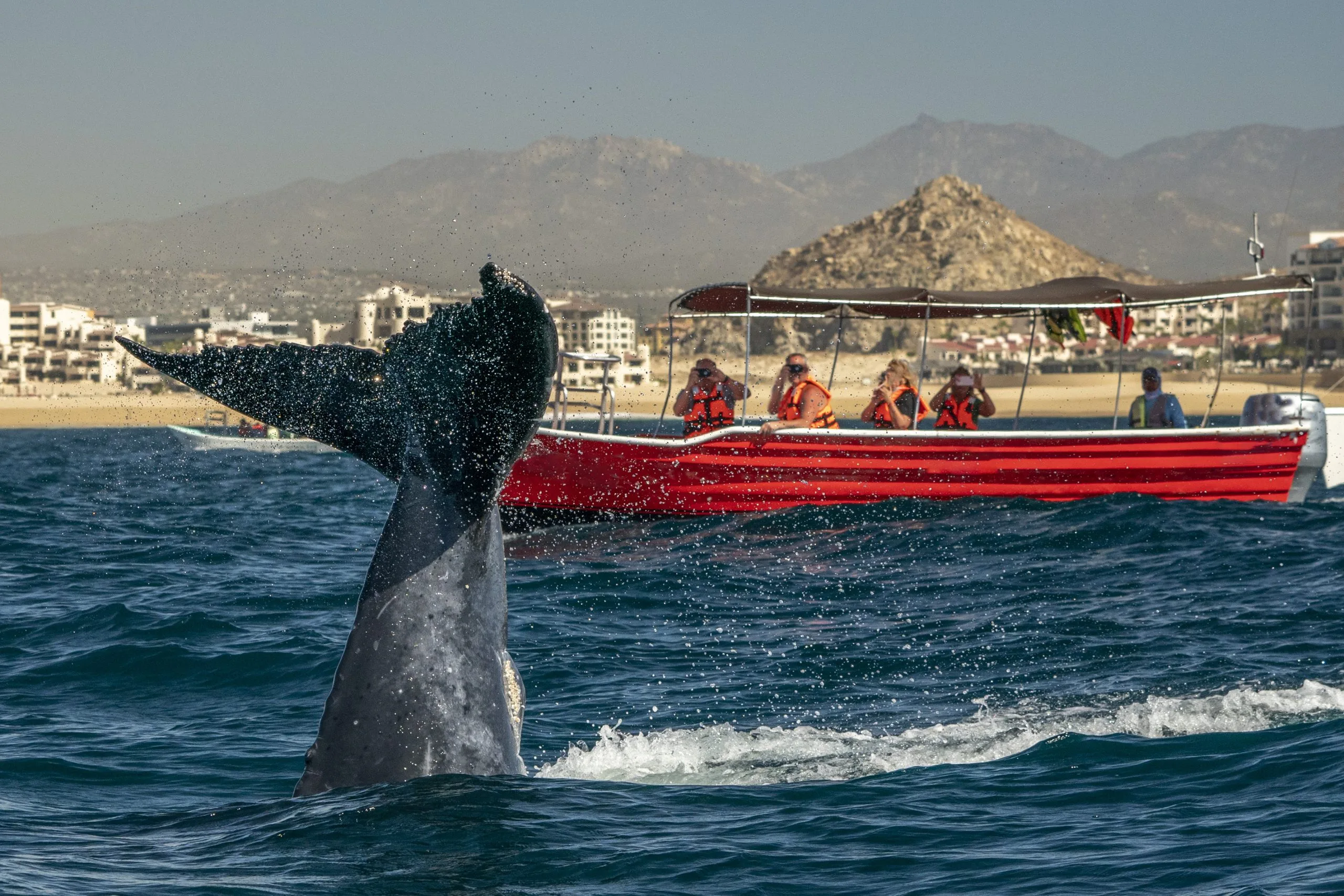
Los Cabos is often hailed as a “paradise on earth.” During the winter months, you not only get to revel in the finest weather of the year, with daily high temperatures averaging 80°F, but it’s also the prime time for whale watching. Among the myriad eco-adventures in Los Cabos, a standout experience is undoubtedly whale watching in Cabo San Lucas. It’s an extraordinary winter activity that the region offers, especially when enjoyed with loved ones.
All whale watching tours set off from the marina in Cabo San Lucas, conveniently located just a 12-minute drive (2.5 miles) from Villa Del Palmar Beach Resort & Spa Cabo, Villa del Arco, and Villa La Estancia Cabo. For those staying at Villa La Valencia Beach Resort & Spa, it’s a slightly longer 25-minute drive (12.9 miles).
There are countless reasons to be thrilled about whale watching in Los Cabos. From early December through the beginning of April, both humpback and gray whales grace the waters of Baja California Sur. While gray whales are smaller and lack dorsal fins, humpbacks exhibit a wider range of colors, with gray to black bodies and a white underbelly. Gray whales, known to be skilled travelers, can cover distances of up to 12,700 miles. Humpbacks, on the other hand, are acrobatic feeders, emerging from the water’s surface to feast on krill and fish like salmon and pollock.
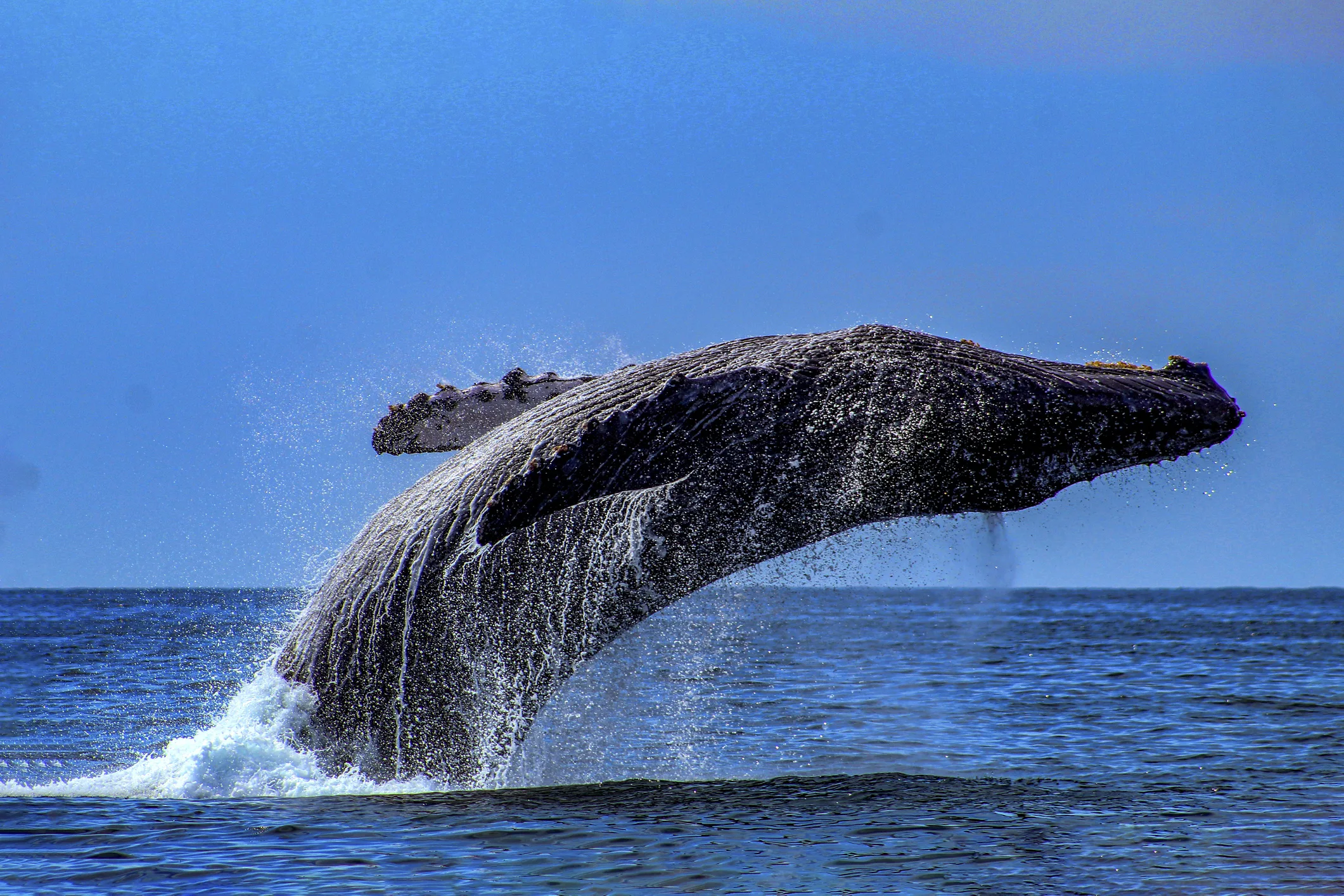
In addition to humpback and gray whales, there’s a chance you might catch a glimpse of blue whales or fin whales, although they are less common. And as you venture out onto the water, keep an eye out for the playful bottlenose and spinner dolphins, as well as sea lions, sea turtles, and Mobula rays.
If you’re seeking an encounter with whale sharks, head to La Paz, Baja California Sur, between October and May. La Paz is a two-hour drive from Cabo San Lucas, and a few tour companies offer the incredible opportunity to swim with these gentle giants. Reach out to your Member Services or Pre-Arrival agent to pre-book your tour and inquire about options that include resort pick-up and drop-off.
Islands of Loreto
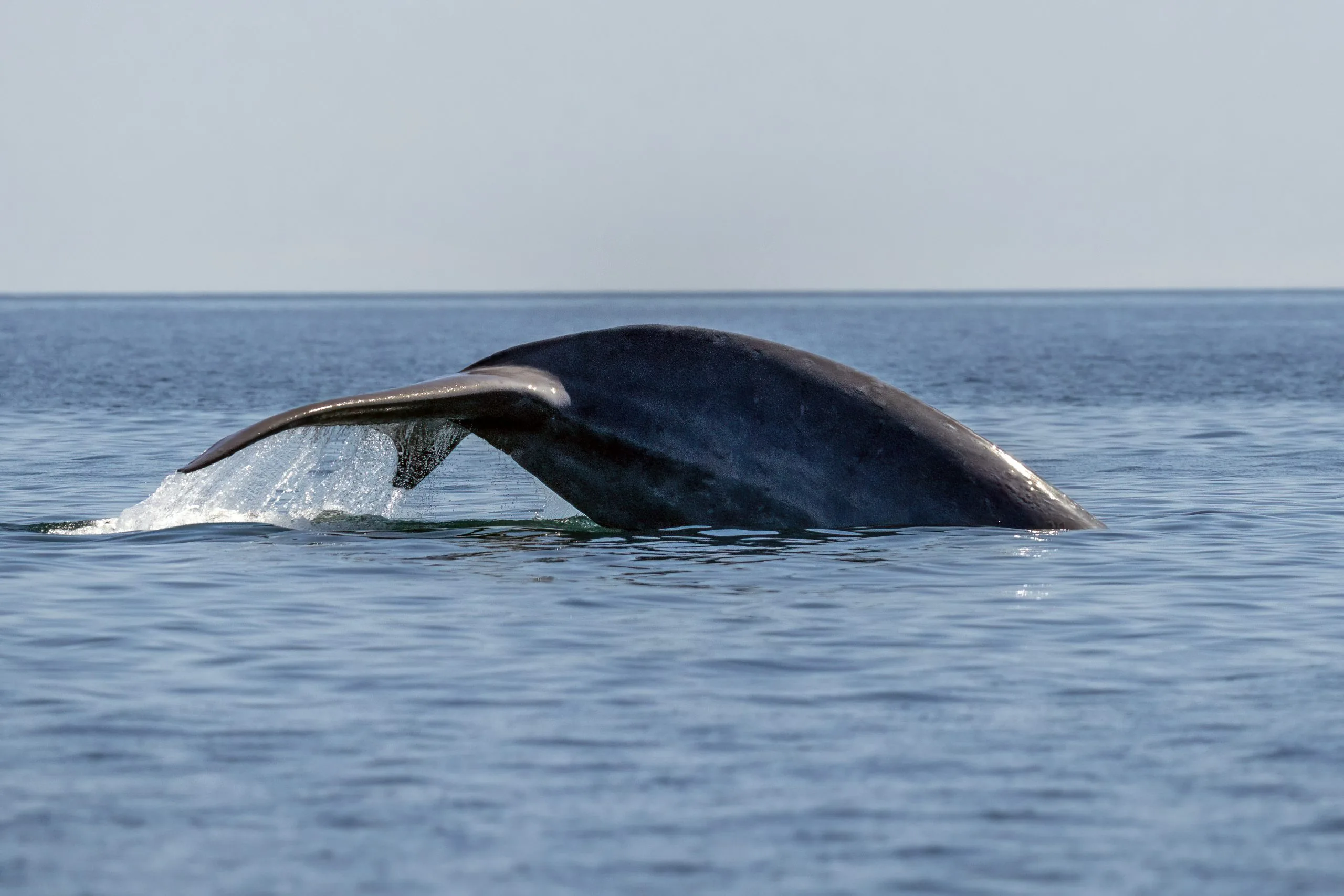
From December through March, the Islands of Loreto come alive with the enchantment of whale watching season. Renowned as one of the world’s premier destinations for this awe-inspiring activity, Loreto offers sightings of over ten whale species. Prepare to be mesmerized by the majestic presence of humpback and gray whales, while also having the rare opportunity to spot blue, sei, sperm, finback, minke, pilot, tropical bottlenose, and orca whales.
To fully immerse yourself in this captivating experience, venture to Loreto Bay National Park, known as “Parque Nacional Bahía de Loreto,” accessible only by boat. Ensure a seamless journey by booking your tour in advance through your dedicated Member Services or Pre-Arrival agent.
Cancun
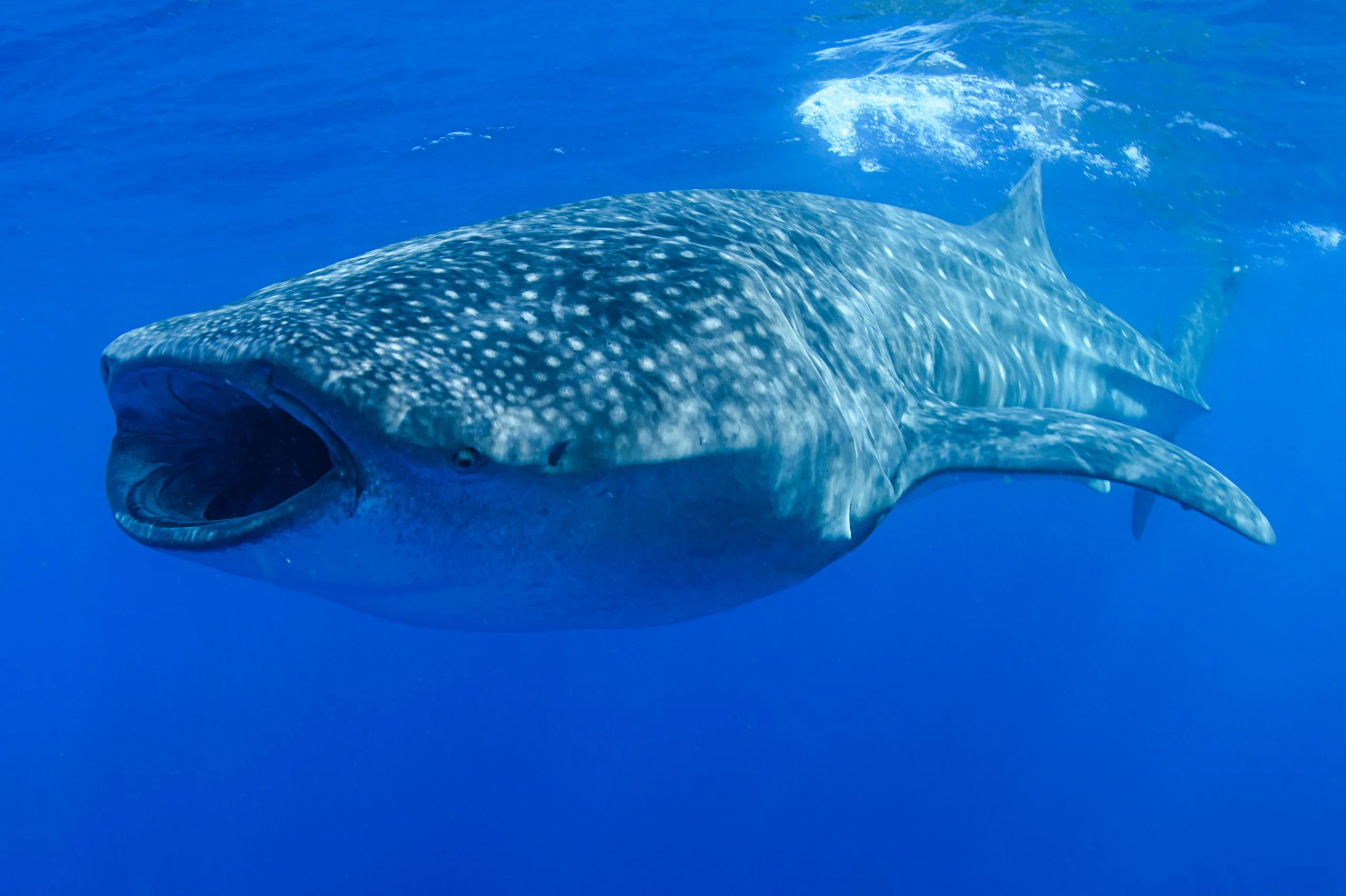
Humpback whales do not migrate as far as Cancun. After leaving Alaska, they reappear in the Baja California peninsula, and some continue their journey to Puerto Vallarta, but they do not reach Quintana Roo.
However, a popular water activity in Cancun is swimming and snorkeling with whale sharks. This should definitely be on your Mexico bucket list. Whale shark season lasts from June to September. Despite their intimidating name, whale sharks are actually gentle and playful creatures. As filter feeders, they pose no threat of biting. These magnificent creatures are known for their massive size, measuring 40 feet long or more, and their distinctive white spots. Swimming alongside whale sharks is a truly mesmerizing experience. To make your adventure even more memorable, consider taking a day trip to the beautiful Isla Mujeres. With its laid-back vibe, soft-sand beaches, and sparkling turquoise waters, it is the perfect complement to your whale shark encounter. You can easily arrange whale shark tours in Cancun, Holbox, and Isla Mujeres through your Member Services or Pre-Arrival agent prior to your vacation.
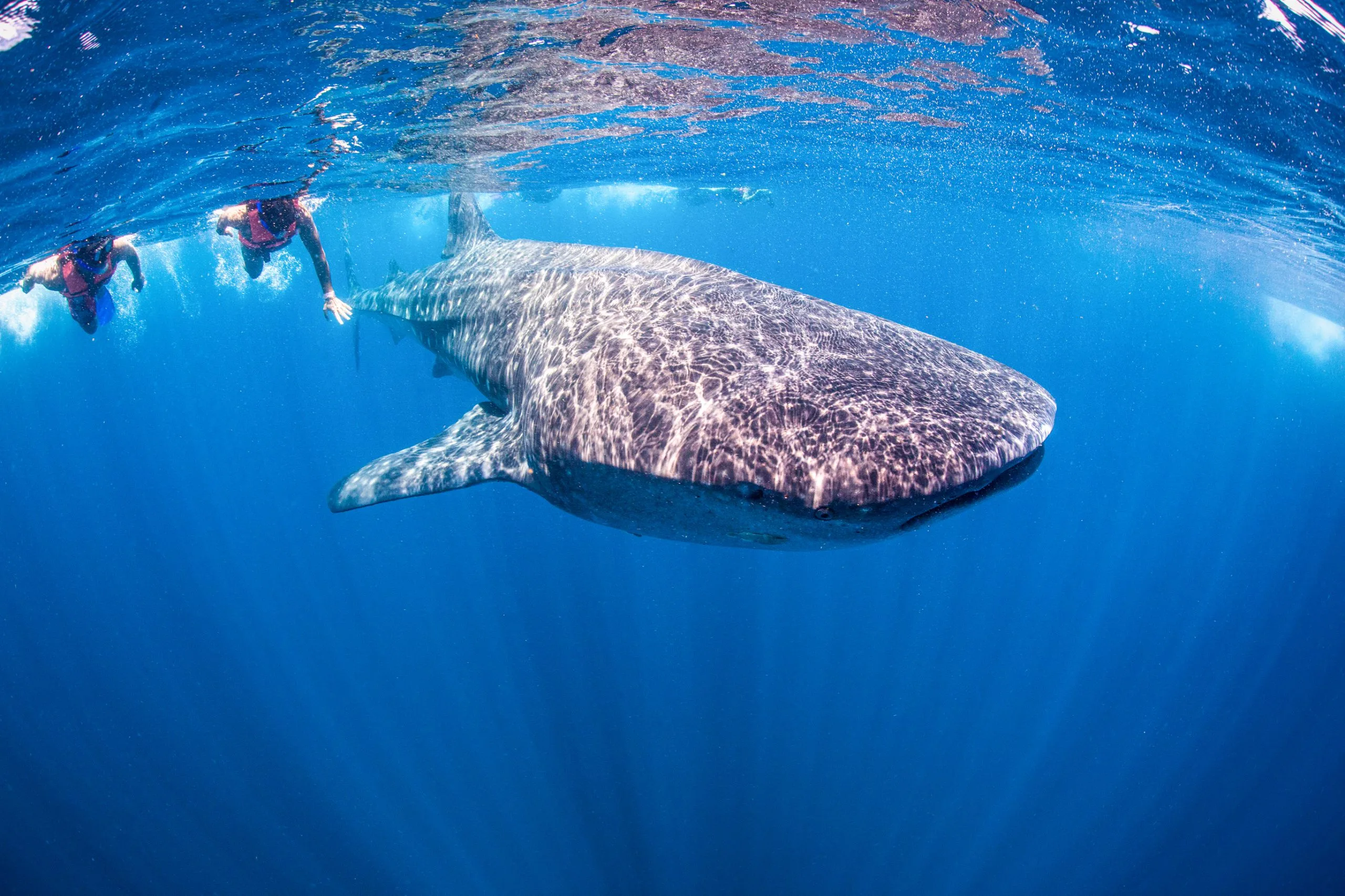
Now you have all the information you need about the best spots to observe whales in Mexico. These majestic creatures are not only captivating to watch but also quite friendly. They may even enjoy spotting you as much as you enjoy seeing them. So why not come and stay at your home away from home in Mexico and embark on a remarkable journey to the warm beaches, accompanied by your whale friends?

